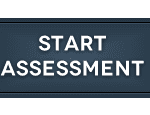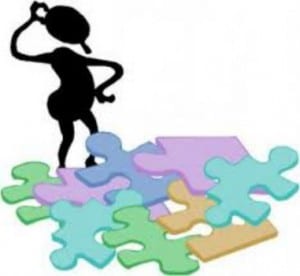 I recently read an article that was talking about the process for sizing up a situation before making a decision. For clarification purposes, this was an article in a business journal, not a public safety journal. This got me thinking about size-up mistakes made on the fire ground.
I recently read an article that was talking about the process for sizing up a situation before making a decision. For clarification purposes, this was an article in a business journal, not a public safety journal. This got me thinking about size-up mistakes made on the fire ground.
The author noted that the best decisions are made on complete information with all the facts compared and contrasted. This might be true for a decision made in an office, but not for one that is made on the street under stress and time compression.
This got me thinking about the [clickandtweet handle=”richgasaway” hashtag=”samatters” related=”samatters” layout=”” position=””]three most harmful size-up mistakes made by first responders.[/clickandtweet] [clickandtweet handle=”” hashtag=”” related=”” layout=”” position=””]Size-up Mistake #1: Failure to complete a size-up[/clickandtweet]
The first size-up mistake is one that reveals its ugliness in the pages of dozens of line-of-duty death reports. Yet, if being mindful, it may be one of the easiest mistakes to fix – Failure to complete a size-up.
When responders arrive on the scene of an emergency it can be tense and stressful. The mission is to control the chaos and to stop the progression of harm. Responders are action-oriented and we are all about making a difference.
Here’s some “tweetable” wisdom for you:
 • Before you start throwing around solutions, make sure you understand the problem. Do a size-up.
• Before you start throwing around solutions, make sure you understand the problem. Do a size-up.
• Every emergency is unique and requires an assessment before intervention.
• Don’t be in such a hurry that you get in the way of an outcome you cannot change.
[clickandtweet handle=”” hashtag=”” related=”” layout=”” position=””]Size-up Mistake #2: Going through the motions.[/clickandtweet]
The second size-up mistake results from a lack of experience and a lack of understanding why size-ups are completed – Going through the motions.
The information gathered in the size-up should drive decision making. Read that previous sentence again. The size-up is a fact gathering mission. Absent facts, the brain fills in the missing information with assumptions. When gathering information during size-up, ask yourself “What does that mean?” And “Is that what I expected?” During size-up you are gathering important puzzle pieces that form understanding. Take your time and make sure you are, truly, understanding what is happening.

Here’s some “tweetable” wisdom for you:
• The size-up is not something to be pencil-whipped.
• The foundation of situational awareness is an accurate size-up.
• The size-up sets up the decision.
[clickandtweet handle=”” hashtag=”” related=”” layout=”” position=””]Size-up Mistake #3: Trying to process too much information[/clickandtweet]
There is a limit to the capacity of your brain to make sense of information. When you exceed your capacity, you are at risk of forgetting some of the information you gathered, giving your attention to the wrong information, getting confused by the volumes of information to be processed or suffering a mental shutdown.
 This leads is to the third size-up mistake – Trying to process too much information.
This leads is to the third size-up mistake – Trying to process too much information.
It was this recommendation in the business journal I was reading that promoted this entire discussion on size-up. When stressed, the brain can only focus attention on, and remember, a small number of items.
I regularly see articles where someone has come up with some catching phrase or acronym to help remember all the information needed during size-up. I think this is dangerous. The human brain simply does not have the capacity to make sense out of all that information, especially when you add stress into the equation.
Here’s some “tweetable” wisdom for you:
• The capacity of short-time memory is about 7 pieces of unrelated information. After that, we start forgetting.
• Overload the brain with too much information and it will shut down. Limit size-up to 5-7 pieces of critical information.
• When conducting a size-up, gathering too much information can be as dangerous as gathering too little information. #Balance
The objective of the size-up is to quickly gather enough information to form situational awareness and then to use your situational awareness to drive good decision making.
First… Think!
Then… Decide!
And Finally… Act!
Don’t shortcut this process.
_____________________________________________________________
Now, for the first time ever, you can receive the content of this valuable safety programs in the NEW Situational Awareness Matters Virtual Academy… at your own pace – from home or while you are on-duty.
_____________________________________________________________
Share your comments on this article in the “Leave a Reply” box below. If you want to send me incident pictures, videos or have an idea you’d like me to research and write about, contact me. I really enjoy getting feedback and supportive messages from fellow first responders. It gives me the energy to work harder for you.
Thanks,

Email: Support@RichGasaway.com
Phone: 612-548-4424
Facebook Fan Page: www.facebook.com/SAMatters
Twitter: @SAMatters
LinkedIn: Rich Gasaway
YouTube: SAMattersTV
iTunes: SAMatters Radio
